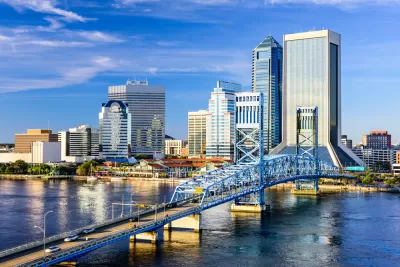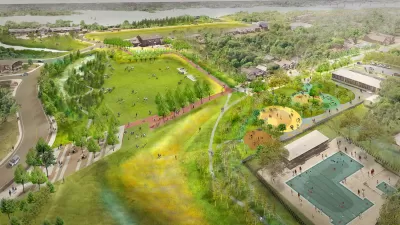The city of Jacksonville's new resiliency department will evaluate the city's long-term needs and coordinate with various stakeholders to implement systems adaptable to extreme climate events.

Brendan Rivers interviews Anne Coglianese, the first Chief Resiliency Officer for the city of Jacksonville. Coglianese, who "came to Jacksonville from New Orleans, where she served as Coastal Resilience Manager from 2017 to 2020," defines resiliency as "the ability of city systems to adapt and thrive in the face of acute shocks like a hurricane or chronic stresses like sea level rise or urban heat."
As climate change intensifies the effects of extreme weather, resiliency is more important than ever, particularly for coastal cities. Coglianese's job entails "breaking down silos within city government, working with outside stakeholders and the independent authorities in and around Jacksonville that make decisions, whether that’s JEA or JTA, and making sure that everyone’s pushing in the same direction and thinking long term." She sees the "luxury" to think long-term as one of the most important aspects of her work, which will let her department "really look at what’s the latest in science and data, where do we need to go and then what interventions need to be put in place to allow city departments to move in that direction together."
For Jacksonville, flooding and urban heat pose some of the biggest risks. To address those risks, Coglianese sees "gray infrastructure and green infrastructure as working in concert together. For a city to be resilient, you need some of those redundancies built in." Coglianese also addresses equity as a crucial part of building resiliency and believes her department's work "needs to be developed based on the best science and data and models."
FULL STORY: A Q&A With Jacksonville’s First-Ever Chief Resilience Officer

Study: Maui’s Plan to Convert Vacation Rentals to Long-Term Housing Could Cause Nearly $1 Billion Economic Loss
The plan would reduce visitor accommodation by 25,% resulting in 1,900 jobs lost.

North Texas Transit Leaders Tout Benefits of TOD for Growing Region
At a summit focused on transit-oriented development, policymakers discussed how North Texas’ expanded light rail system can serve as a tool for economic growth.

Why Should We Subsidize Public Transportation?
Many public transit agencies face financial stress due to rising costs, declining fare revenue, and declining subsidies. Transit advocates must provide a strong business case for increasing public transit funding.

How to Make US Trains Faster
Changes to boarding platforms and a switch to electric trains could improve U.S. passenger rail service without the added cost of high-speed rail.

Columbia’s Revitalized ‘Loop’ Is a Hub for Local Entrepreneurs
A focus on small businesses is helping a commercial corridor in Columbia, Missouri thrive.

Invasive Insect Threatens Minnesota’s Ash Forests
The Emerald Ash Borer is a rapidly spreading invasive pest threatening Minnesota’s ash trees, and homeowners are encouraged to plant diverse replacement species, avoid moving ash firewood, and monitor for signs of infestation.
Urban Design for Planners 1: Software Tools
This six-course series explores essential urban design concepts using open source software and equips planners with the tools they need to participate fully in the urban design process.
Planning for Universal Design
Learn the tools for implementing Universal Design in planning regulations.
City of Santa Clarita
Ascent Environmental
Institute for Housing and Urban Development Studies (IHS)
City of Grandview
Harvard GSD Executive Education
Toledo-Lucas County Plan Commissions
Salt Lake City
NYU Wagner Graduate School of Public Service





























